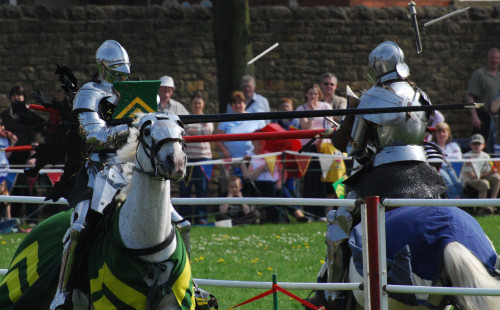Pictures from my travels whilst researching locations for the Arthurian Project
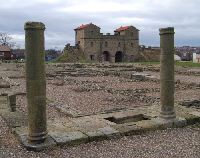
Roman fort, 'Arbeia', South Shields
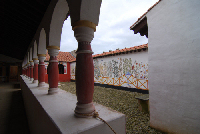
Commander's Quarters, 'Arbeia'
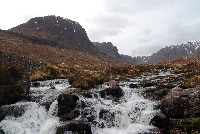
By the road to Applecross, Wester Ross

Wester Ross from the top of the Applecross Pass
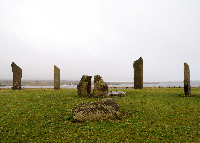
The Stones of Stenness, Orkney

Neolithic home, Skara Brae, Orkney
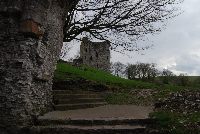
Peveril Castle, Castleton, Derbyshire
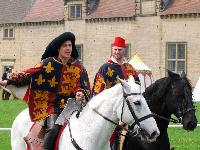
Bolsover Castle, Derbyshire
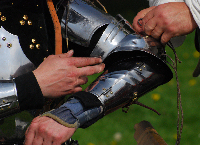
Arming 'Sir Edward Stacey'
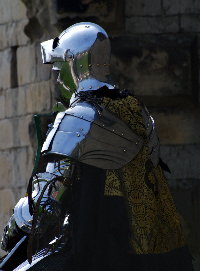
'Sir Edward Stacey' prepares to joust
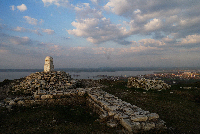
Foundations of a Roman watchtower, Holyhead mountain
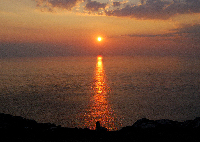
Sunset on Holyhead Mountain
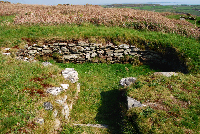
Hut circles, South Stack, Anglesey
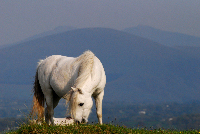
Free grazing ponies, Anglesey, before Snowdonia
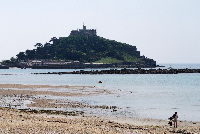
St Michael's Mount, Cornwall
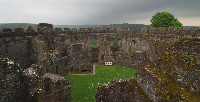
Restormel Castle, Cornwall
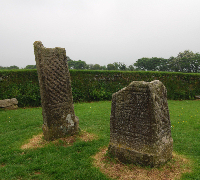
King Doniert's Stone, Cornwall
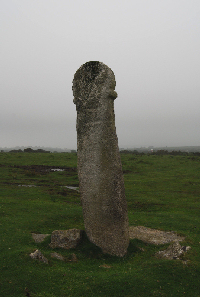
Celtic Cross, Cornwall
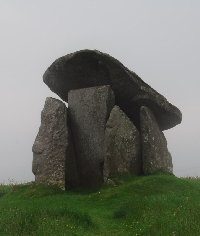
Trevethy Quoit, Cornwall
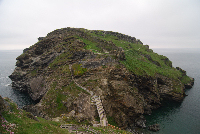
Site of Tintagel Castle, Cornwall
|
Overview
The idea of writing an entire Arthurian cycle is a daunting one;
considering doing so in verse may border on the insane. Yet
'Aurorielle',
originally intended as a stand-alone fairy story in an Arthurian setting,
has become the pilot for my 'Arthurian Project'.
It is now clear I could write a full cycle in either verse or prose.
Sadly prose is the more likely, for to commit myself to a verse cycle
would probably require abandoning many other projects that are also dear to me.
After completing 'Aurorielle', my first step forward was to create an Arthurian time line.
This included the few known historical events (most of which are dubious in nature or date)
and added the fictional ones required to tell the story.
In 'Aurorielle', I have accounted for the nature and theology of the Fay,
the curious presence of Merlin in Arthur's court
and many other thorny questions which beset an Arthurian writer.
(Merlin was effectively a shaman in
Geoffrey of Monmouth's
"History of the Kings of Britain" (circa 1136),
and a curious compromise of sorceror and pious Christian in
Thomas Malory's
"Le Morte d'Arthur" (1485).)
Having decided on those issues, the events required fell into place,
though not without considerable research.
My objective is to write a recognisable fiction whilst including the few known events of Arthur's time,
putting them at the heart of the story, whereas others have discarded them entirely.
I base my history mainly on the views of
Professor Leslie Alcock,
as expressed in his book
"Arthur's Britain". Alcock's work may not be entirely right and it may no longer be fashionable,
but it is important to me to work with a history in which Arthur is believed to have been real.
I see no point in writing new legends based on accounts which suppose Arthur to be an old legend.
I do not want to write legends about legends.
Even if Arthur was 'no more' than a legend,
even legends begin with something that once happened,
no matter how far from the truth they stray.
I intend my legends to include all of the fact they can include.
Even if the truth is truly 'only' a legend,
there is something underneath that legend which I can touch -
a desire held by people of later times to have an ideal King.
That desire may arise from the deficiencies of the real kings people had to live under.
But it might just derive from the example of a real man who fought at Badon under the sign of the cross -
the only leader in Europe to turn back the Saxon tide.
I happen to find that very credible; others may not.
But they must write their legends as they will; I will write mine.
However greatly one desires to stick to the few known facts,
to ignore the body of legend postdating them would be to write a mere history;
and history has very little to offer. History would have me write of an Arthur
who has no Merlin to guide him (for such a shaman could never fight for the cross), no
Lancelot (because French knights in 6th century Britain are an absurdity),
no plate armour (arising from Malory's inability to imagine his way out of the 15th century)
and no Fay (for they are a myth grafted onto a period where history is painfully lacking).
There is no purpose in ignoring legend; there is so little known history to write,
that anything based on that history becomes the legend one prefers to write.
Geoffrey knew that, but preferred to pretend otherwise.
I prefer to write the most possible version of the legends,
rather than just those things which are truly possible.
Yet the most interesting stories from Arthur's period are those Malory and his sources ignore;
the events of the time between
Vortigern
and the Saxon wars (which are Arthur's defining purpose), set in a real and vibrant British landscape -
Cornwall, Wales and the Orkneys. Those lands are both the true home of these tales
and the most ruggedly beautiful lands anyone could want to set a tale in.
Since creating a time line, I have made extensive preparatory notes.
I have also spent as much time as I can visiting and photographing the key locations.
Thus 'Aurorielle'
has become the first of a series of stories yet to be written,
defining the world in which I write.
To those who might ask, "Why rewrite Arthur?",
I would say that everyone who wrote a version of Arthur we retain and revere
began with the material which preceded them,
then added their own unique contribution.
Thus I am entirely in the Arthurian tradition,
because that tradition is to take what has gone before
and weave it into something new and wonderful of one's own making.
One should do so in keeping with the core of what others have written;
yet writers from Geoffrey to Malory never touched on the heart
of what made any real Arthur famous -
fighting the Saxons at Badon under the sign of the cross, and winning.
If Arthur had not done so, I suggest there would have been no reason for the Welsh
(as they were soon to become) to commemorate him in legend, or for the French
(before there was a France) to have sought glory by spuriously involving themselves
with his legend through poetry and song. There is no smoke without fire;
but most of what we read from Geoffrey to Malory is a smoke which ignores the fire.
My desire is to put the fire first and let the smoke be of secondary importance.
What smoke has been written! But it rose from a stupendous fire.
An Arthurian Cycle
1. Aurorielle
Already written.
2. Sir Gawain and the Green Knight
A considerably expanded version of the medieval tale, in three parts:
2.1 The King's Champion
Prince Pellinore, champion of King Uther,
undergoes a quest which entangles him with the affairs of King Lot of Orkney
and the mysterious Questing Beast, which has threatened him.
Afterwards, Pellinore is wrongly considered responsible for Lot's death;
then his valour goes on to be rewarded with utter disaster.
2.2 The Knight of the Mountains
Pellinore, alone but grimly determined,
seeks to change the character of the British nation
by making it impossible for unrighteous kings to flourish.
Yet the final result of this is the kingship of Arthur,
son of the late king Uther, whilst Uther's failings
were the very thing Pellinore set out to reform.
2.3 White Lion
When King Lot's son Gawain grows to manhood, he swears revenge on Pellinore,
who he supposes to be his father's murderer.
But when Arthur unexpectedly arrives on the throne,
the rules of his court require knights to put aside their personal disputes.
So Gawain is caught between competing oaths.
When the Green Knight unexpectedly appears at Camelot,
Gawain accepts the challenge of the Beheading Game.
This requires him to leave Arthur's Court, expecting never to return.
Before Lot's death, Pellinore promised to hunt the Questing Beast,
in order to save Gawain from its vengeance on the royal line of the Orkneys.
The Beast will hunt Gawain as soon as he is old enough to be Orkney's King.
Hidden from view for years, the Beast has at last been sighted,
so Pellinore is out hunting for it in the wild.
Freed from his oath to Arthur, Gawain searches for the Green Knight.
But as he has no clue to the location of the Green Chapel,
Gawain reasons seeking directions whilst hunting Pellinore
is as good a means of finding Green Knight as any other.
A terrible chase ensues, far from the reach of Arthur's justice.
Gawain must allow Green Knight to behead him, or lose all honour;
but he must also kill Pellinore to fulfil his oath.
Will Gawain be able to kill Pellinore before finding Green Knight?
Pellinore is sworn to kill the Questing Beast to protect Gawain -
but he already knows no human hand can destroy it.
What will result from this culture of death?
The answer lies in Green Knight's mysterious identity and purpose,
which will only be revealed to one who bares their neck
to the blade of his hideous axe.
3. Arthur of Badon
A mystery - the British, shortly to become the Welsh, begin the Arthurian era as Christians,
whilst the Saxons are pagans. Yet later we find the Saxons are Christian,
whilst the Welsh have developed a partly pagan culture. Why?
Somewhere in the mists of time there is said to have been a battle at Mount Badon.
No one can say for certain where that is, or when it took place. Only the name remains.
The scale and nature of the forces is a matter of guesswork.
All that was ever written about it at the time, was this:
Arthur fought and defeated the Saxons at Badon, bearing the cross.
From then on, Saxon incursions into Britain ceased or were even reversed for 30 years.
What feat of arms convinced the Saxons their intended conquest of Britain was beyond hope,
unless Arthur should die?
In a forgotten place and time, Arthur did what no other European monarch
or war leader of his era ever managed to do.
The result would change the history of these islands ever after.
4. The Round Table
Myths and legends concerning Arthur are mostly set in a glorious era
between the founding of the Round Table and a terrible conclusion at Camlann.
The era of the Round Table is surely mythical; it is the 'smoke' that I spoke of,
whereas Badon is the fire.
For nine hundred years, the smoke has utterly eclipsed the fire,
becoming the most enduring legend in the English language.
5. King Forever
All good things come to an end.
The stories of the Grail and of Camlann are well known; one leads to the other.
But the images used in the Grail stories are questionable at best for Arthur's time;
identifying the true source of those false images shows how they themselves led to an
old and dark cataclysm which is nevertheless horribly familiar today.
6. Vita Merlini
Geoffrey of Monmouth
created Merlin out of the shamans of former times. Was his 'Merlin' based on
Lailoken?
Lailoken was out of period for Arthur; he was actually too late,
though he belonged to a much older tradition.
Geoffrey knew Merlin could have no place in Arthur's Court;
he wisely used him only as Uther's means to rape Igraine.
But where did this "Devil's Son" come from?
How did he become, to the authors who followed Geoffrey,
at once both Geoffrey's dark magician and Malory's pious Christian?
There is a model for Merlin that fits both views,
but it has been forgotten for centuries.
Today it has been restored, though few know of it.
Thus it is possible to find a Merlin who satisfies the courts
of both Uther and Arthur. To discover this man is to discover the times;
not in a way we can romanticise or desire,
because they were more terrible even than the worst of the darkness
we can no longer ignore in our society today.
In Arthur's time, when both the old and the new models of power through wisdom were already dying,
no-one could stand in the way of that darkness - except a man such as Merlin, its very product.
7. The Intercession of Trefor
This is a conjectural work that would unify the events of the other stories,
showing them from the perspective of the King of the Angels,
into whose care Sir Trefor was given at the end of
'Aurorielle'.
'The Intercession of Trefor' returns to the issues exposed in 'Aurorielle',
completes Trefor's romance with the Fairy of the Dawn
and reveals the hidden depths behind the events spoken of in the other books.
|


